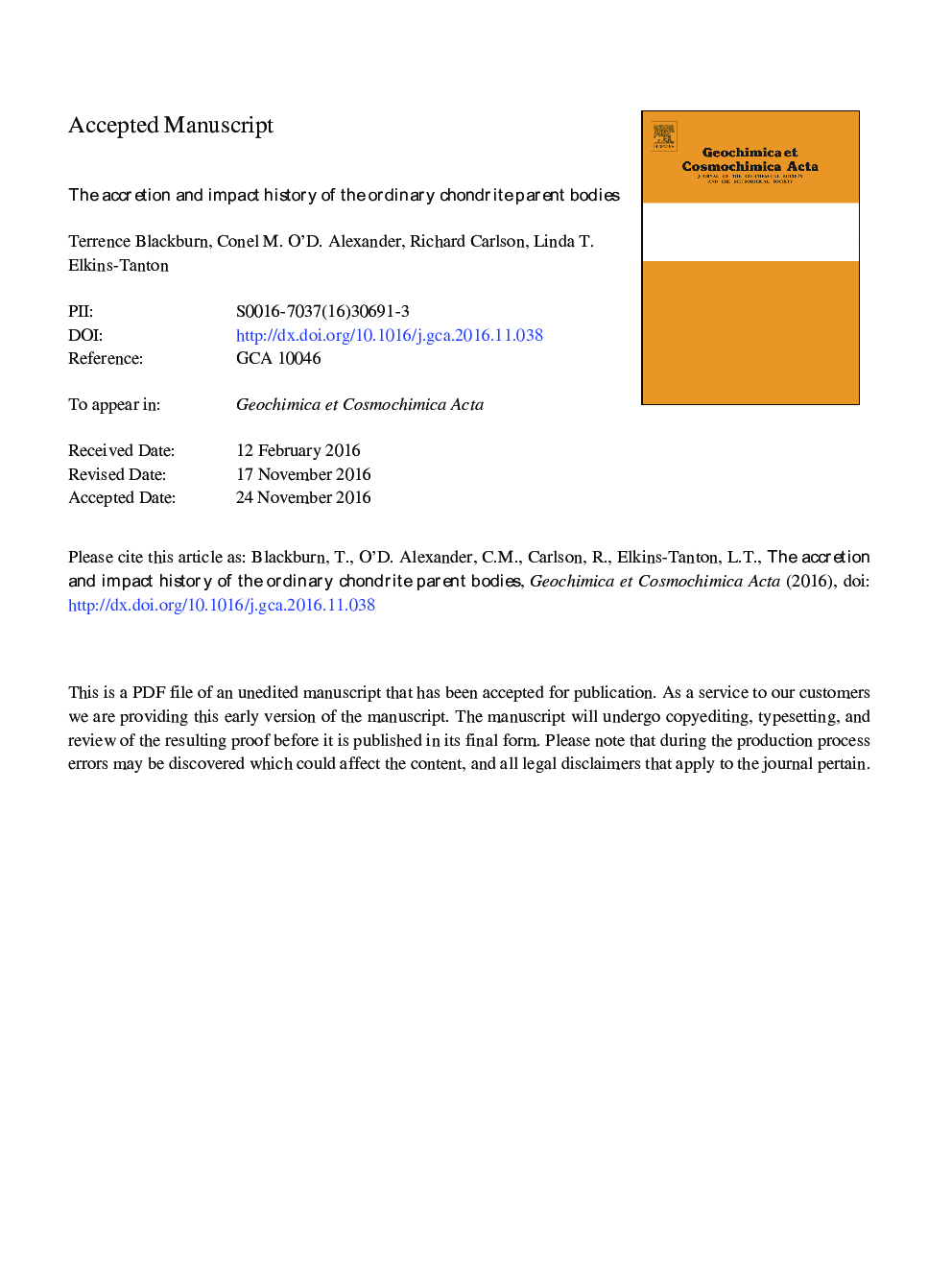| کد مقاله | کد نشریه | سال انتشار | مقاله انگلیسی | نسخه تمام متن |
|---|---|---|---|---|
| 5783572 | 1637957 | 2017 | 32 صفحه PDF | دانلود رایگان |
عنوان انگلیسی مقاله ISI
The accretion and impact history of the ordinary chondrite parent bodies
ترجمه فارسی عنوان
تاریخ تسریع و اثرگذاری اجسام معمولی کندری
دانلود مقاله + سفارش ترجمه
دانلود مقاله ISI انگلیسی
رایگان برای ایرانیان
کلمات کلیدی
عادی، کندریت، خلأ سیستم خورشیدی، حرارتی
موضوعات مرتبط
مهندسی و علوم پایه
علوم زمین و سیارات
ژئوشیمی و پترولوژی
چکیده انگلیسی
Our thermal model and previously published thermometry data limit accretion time to 2.05-2.25 Ma after CAIs. Measured Pb-phosphate data place minimum estimates on parent body diameters of â¼260-280 km for both the L and H chondrite parent bodies. They also consistently show that petrologic Type 6 (highest thermal metamorphism) chondrites from both the H and L bodies have younger ages and, therefore, cooled more slowly than Type 5 (lesser metamorphism) chondrites. This is interpreted as evidence for Type 5 chondrite origination from shallower depths than Type 6 chondrites within initially concentrically zoned bodies. This contrasts metallographic cooling rate data that are inconsistent with such a simple onion shell scenario. One model that can reconcile these two data sets takes into account subtle differences in temperature to which each system responds. This working model requires that disruption occur early enough such that the Ni-metal system can record the cooling rate associated with a rubble pile (<70 Ma), yet late enough that the Pb-phosphate system can record an onion shell structure (>30 Ma). For this 30-70 Ma timeline, reaccretion into smaller rubble piles will ensure that the originally deeply buried and hot Type 6 samples will always cool faster as a result of disruption, yielding nearly uniform ages that record the time of parent body disruption. This is consistent with the available Pb-phosphate data, where all but one Type 6 chondrite (H, n = 3; L, n = 4) yields a cooling age within a narrow 4505 ± 5 Ma timeframe. These data collectively imply that both the H and L chondrite parent bodies were catastrophically disrupted at â¼60 Ma. In addition, combined Ni-metal and Pb-phosphate models confirm that a subset of Type 4 chondrites record early rapid cooling likely associated with erosional impacting of the H and L parent bodies on â¼5 Ma timescales.
ناشر
Database: Elsevier - ScienceDirect (ساینس دایرکت)
Journal: Geochimica et Cosmochimica Acta - Volume 200, 1 March 2017, Pages 201-217
Journal: Geochimica et Cosmochimica Acta - Volume 200, 1 March 2017, Pages 201-217
نویسندگان
Terrence Blackburn, Conel M.O'D. Alexander, Richard Carlson, Linda T. Elkins-Tanton,
